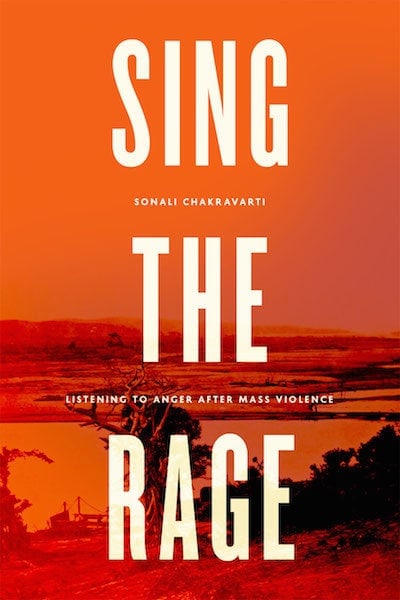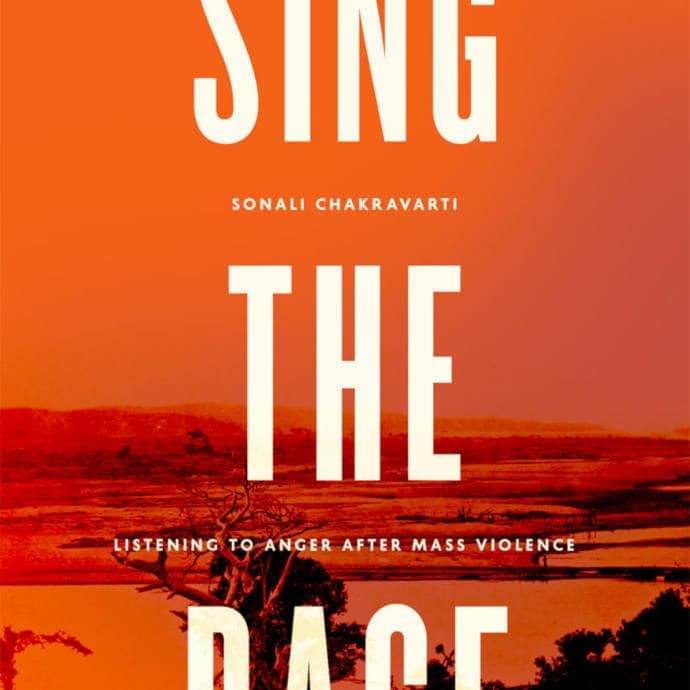Anger was abundant in South Africa during the 1990s. After the abolition of Apartheid in 1994, the Truth and Reconciliation Commission was established to investigate the human rights abuses that had occurred over the past five decades. When victim testimony began in 1996, anger could not be avoided, even when commissioners and victims alike were sceptical of its value. But anger is valuable, as Sonali Chakravarti argues in her new book, Sing the Rage. Anger is valuable, but must be approached appropriately.
Chakravarti develops her argument through careful study of South Africa’s Truth and Reconciliation Commission (TRC). She offers a brief history of transitional justice leading up to the TRC, before challenging two sceptics of emotional victim testimony – Hannah Arendt and Adam Smith. Finally, Chakravarti offers a model of listening to anger, rather than shutting it down, that helps to rebuild trust. In her model, listening transforms anger into justice and victims into citizens.
Although Chakravarti’s argument centres on restorative justice at the national and international scale, her work also provides valuable insight into smaller-scale conflict resolution that aims to restore victims to full membership in their community. Her approach to listening to anger provides a practical model for engaging with anger on personal level.
I would recommend Sing the Rage not only to scholars of transitional justice, but also to all readers with an interest in restorative justice and conflict resolution.
Chakravarti begins her argument by tracing the history of victim testimony in transitional justice commissions from the Nuremberg trials and subsequent Eichmann trial in Jerusalem to South Africa’s Truth and Reconciliation Commission. The Nuremberg trials excluded victim testimony in order to maintain the appearance of impartiality and rationality (p.26). By contrast, victim testimony was central to the Eichmann trial in the early 1960s. The emotional testimony of the Holocaust victims was used to reinforce the legitimacy of the new Israeli state (p.36). Hannah Arendt, who covered the trials for The New Yorker, was sceptical (p.36). She felt that the emotional displays at the trial served only to manipulate the viewers, and preferred controlled, fact-based testimony instead. In responding to Arendt’s critiques, Chakravarti argues that these displays of anger do have a benefit beyond the manipulation of spectators. Anger communicates the needs and fears of the victims. Furthermore, listening and engaging with anger helps to rebuild trust and transforms victims into citizens.
Decoupling truth commissions from criminal trials, as was done in South Africa, creates new opportunities to explore the emotional consequences of conflict and gives greater freedom to express complicated and sometimes contradictory emotions.
 However, pre-written narratives can still be imposed on truth commissions. Chakravarti argues that the narrative emphasis on forgiveness was one way that the South African TRC restricted expressions of anger (p.59). Righteous anger, the anger that results from actions widely-believed to be unjust and demands clear redress, is the most easily justified. These are the easy cases, Chakravarti says (p.9), and she pushes her argument further. She describes three dimensions of anger – cognitive-evaluative, confrontational, and kinetic – each of which offers different benefits and suggests a different manner of listening. Cognitive-evaluative anger is a judgment. It is uniquely capable, Chakravarti argues, of teaching us what people both need and fear (p.128). Confrontational anger is more complex and may not have a clear remedy (p.143). However, this highlights the limitations of our community and, in the case of a truth commission, points the way toward to new framework of understanding. Finally, the kinetic dimension of anger represents anger as energy (p.149). By engaging with anger in this form, we acknowledge a shared humanity and begin to reestablish trust.
However, pre-written narratives can still be imposed on truth commissions. Chakravarti argues that the narrative emphasis on forgiveness was one way that the South African TRC restricted expressions of anger (p.59). Righteous anger, the anger that results from actions widely-believed to be unjust and demands clear redress, is the most easily justified. These are the easy cases, Chakravarti says (p.9), and she pushes her argument further. She describes three dimensions of anger – cognitive-evaluative, confrontational, and kinetic – each of which offers different benefits and suggests a different manner of listening. Cognitive-evaluative anger is a judgment. It is uniquely capable, Chakravarti argues, of teaching us what people both need and fear (p.128). Confrontational anger is more complex and may not have a clear remedy (p.143). However, this highlights the limitations of our community and, in the case of a truth commission, points the way toward to new framework of understanding. Finally, the kinetic dimension of anger represents anger as energy (p.149). By engaging with anger in this form, we acknowledge a shared humanity and begin to reestablish trust.
Although it is often easier to demand rational, impartial facts, Sing the Rage persuasively argues for an honest engagement with anger during transitional justice commissions. Listening sincerely to anger helps to transform that anger into justice.
Rather than answering anger with compassion or pity, Chakravarti argues for a trust-building model. In many circumstances, some interaction with strong emotion will be inevitable. Before we dismiss this anger, however, we should ask ourselves what we can learn from it. What does it communicate about our needs and fears? What does it show us about the limitations of our community and ourselves? Anger is powerful. By engaging with it honestly, we can begin to reestablish trust and rebuild the bonds of community. For anyone interested in transitional justice, Sing the Rage is a worthwhile read.
Chakravarti, Sonali. 2014. Sing the Rage. Listening to Anger After Mass Violence. Chicago: University of Chicago Press. 232 pp. Hb: $35.00. ISBN: 9780226119984.



